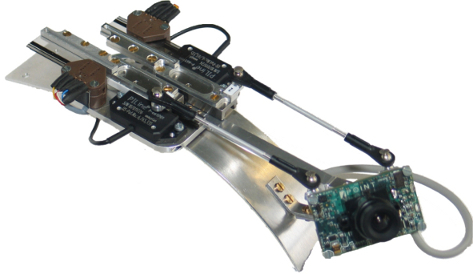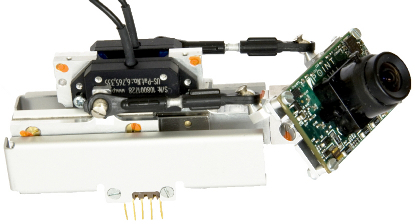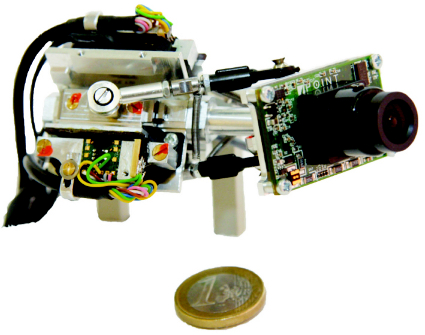Images acquired from a first person's perspective can be used to estimate the user's intention. Required high quality images can be retrieved when continuously aligning a camera with the human gaze. The human vestibulo-ocular and optokinetic reflexes automatically stabilize the human eye, even under dynamic conditions. Such an approach, however, requires camera orientation systems which are able to reproduce the high dynamic movements of the human oculomotor system, while at the same time providing a small and lightweight design. In this project, parallel kinematic manipulators, driven by ultrasonic piezo-actuators, with two and three rotational degrees-of-freedom are developed. Besides kinematic, also dynamic models are calculated and used to optimize the workspace/package ratio and to estimate force and velocity output capabilities. Furthermore a series of control strategies are investigated. Prototypes of the designed camera orientation systems are developed and integrated into different application scenarios.
The described research activities are embedded in the interdisciplinary cluster of excellence “Cognition for Technical Systems – CoTeSys”. The aim of the work is to develop and control compact high dynamic camera orientation systems which are specifically designed for the needs of the CoTeSys projects "Action recognition from look-ahead fixations of objects in space with self-calibrating gaze control of head-mounted stereo cameras'' (project #106) and "EyeSeeCam: Natural Visual Exploration and Interaction in Humans and Robots'' (project #414). Furthermore, the camera orientation systems are also adapted to other application scenarios (remote eye tracker, active vision system for humanoid robots as well as eye-related Wizard-of-Oz scenarios) in collaboration with project partners from the Chair for Clinical Neurosciences, LMU Munich, the Institute for Human-Machine Communication, TUM, and the Institute for Cognitive Systems, TUM, within the CoTeSys cluster.


